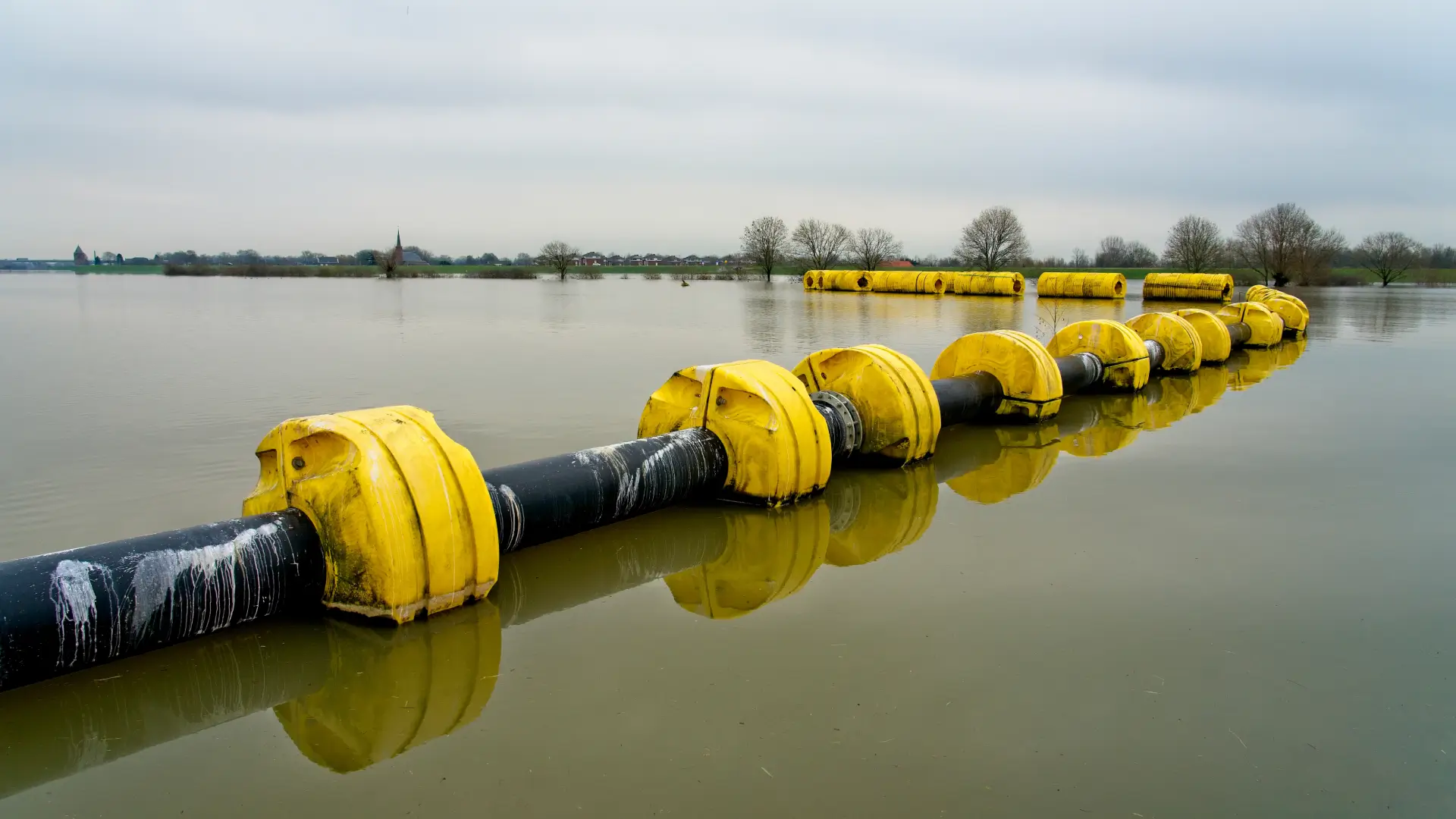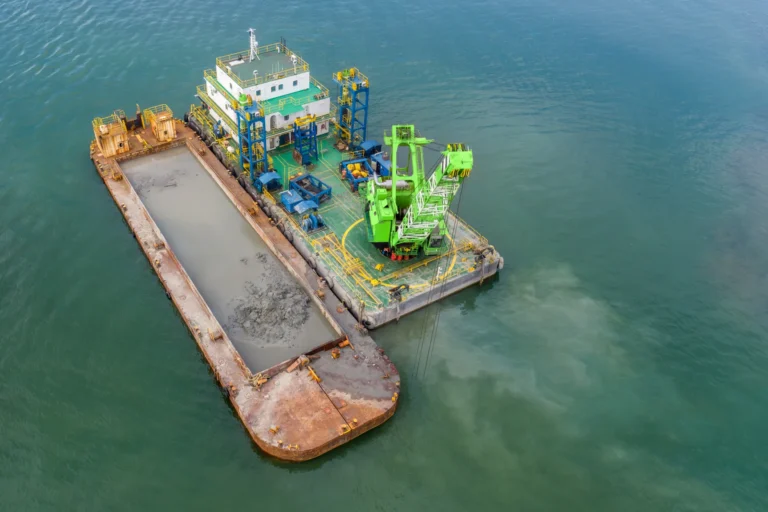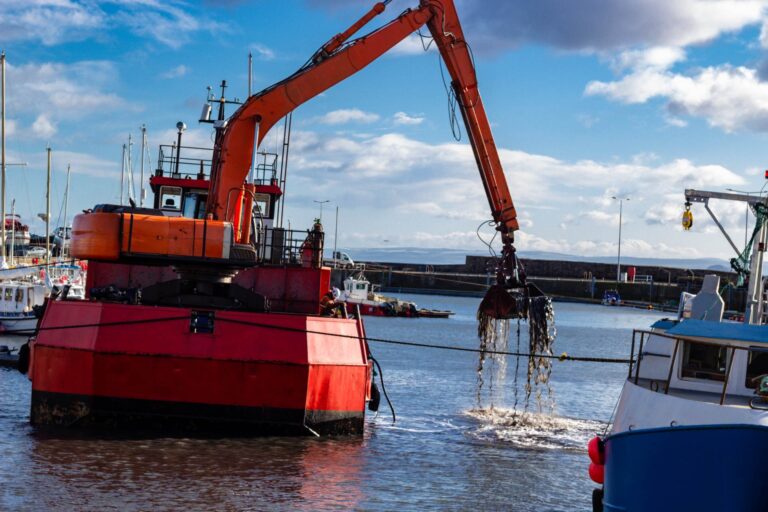Dredging plays a crucial role in maintaining the health and functionality of waterways, supporting infrastructure, and sustaining industrial operations. It involves the removal of sediment, debris, and other materials from the bottom of bodies of water such as rivers, lakes, and harbors to improve navigation, prevent flooding, and facilitate construction. Traditional dredging methods have long been essential for keeping ports operational, maintaining channels, and managing water flow in areas prone to sediment buildup. However, as environmental awareness grows, so does the recognition of the potential harm dredging can cause to ecosystems.
To address these concerns, advanced pipeline dredging has emerged as an innovative approach that aims to balance operational needs with environmental sustainability in dredging. This method emphasizes the use of modern technology and eco-friendly practices to reduce environmental damage while maintaining the effectiveness of dredging operations. This article will explore how advanced pipeline dredging contributes to sustainability and the various innovations that make this method environmentally sound.
Understanding Pipeline Dredging
Pipeline dredging refers to the process of using dredging equipment that moves dredged material through pipelines, typically to disposal sites or locations where the material can be reused. This method differs from other dredging techniques, such as mechanical dredging, which uses buckets or grabs to excavate sediment. Pipeline dredging offers continuous, efficient material transfer and is ideal for projects involving large volumes of sediment over long distances.
Pipeline dredging has key applications in industries such as ports, waterways, mining, and construction. For example, ports use pipeline dredging to remove sediment buildup that could obstruct shipping routes, while the mining industry employs it to manage tailings and slurry materials. The method’s ability to move vast quantities of material quickly makes it particularly attractive in these sectors.
However, traditional pipeline dredging also comes with environmental concerns. The disturbance of sediments during the dredging process can release pollutants such as heavy metals and organic materials into the water, degrading water quality. Sediment resuspension and turbidity can reduce light penetration, harming aquatic plants and ecosystems. In addition, the machinery and dredging equipment used in pipeline dredging can contribute to emissions, noise pollution, and habitat disruption. These challenges have necessitated the development of more environmentally sustainable methods.
Environmental Challenges in Conventional Pipeline Dredging
Conventional pipeline dredging methods, while effective in sediment removal, can cause significant environmental damage. One of the primary concerns is water quality degradation due to the resuspension of fine particles. When sediments are disturbed, they release toxins and pollutants into the water, which can spread across large areas, affecting aquatic ecosystems. Increased turbidity can reduce oxygen levels and block sunlight, which is vital for the photosynthesis of underwater plants. This disruption can lead to long-term damage to fish populations and other aquatic organisms, making it essential to focus on environmental sustainability in dredging to mitigate these impacts.
Another challenge is the emission of pollutants from the dredging equipment itself. Conventional dredgers are often powered by diesel engines, which emit carbon dioxide and other harmful gases, contributing to air and water pollution. Noise generated by the dredging process also poses a threat to marine life, particularly species that rely on sound for navigation and communication.
Managing dredged material sustainably is another issue in traditional pipeline dredging. The disposal of large quantities of dredged material can disrupt ecosystems if not handled properly. Dumping dredged material in certain areas may smother habitats or introduce contaminants to new environments. Given these challenges, the need for advanced pipeline dredging methods that focus on environmental sustainability in dredging is clear.

Innovations in Advanced Pipeline Dredging for Sustainability
To mitigate the environmental challenges of conventional pipeline dredging, several innovations have been developed that focus on improving environmental sustainability in dredging operations. These advancements ensure that dredging continues to support critical infrastructure and industrial operations while minimizing harm to the environment.
Precision Dredging Technology
One of the most significant innovations in advanced pipeline dredging is the use of precision dredging technology. This method employs GPS, sonar, and real-time data monitoring to increase the environmental sustainability in dredging activities. By using these tools, operators can target specific areas for dredging with minimal impact on surrounding ecosystems. Precision dredging significantly reduces over-dredging, which can lead to unnecessary sediment disruption. Real-time data monitoring allows for continuous adjustments during the operation, ensuring that dredging is efficient and environmentally sound.
Eco-Friendly Pipeline Dredging Equipment
The development of eco-friendly dredging equipment is another key advancement in promoting environmental sustainability in dredging. Traditional diesel-powered dredgers are gradually being replaced by electric or hybrid-powered dredgers, which produce fewer carbon emissions and reduce the overall environmental impact. This shift helps address one of the major environmental concerns associated with pipeline dredging—air pollution from dredging machinery. In addition, many modern dredgers now use biodegradable oils and lubricants, which help prevent water contamination in the event of leaks or spills. These environmentally friendly practices in dredging equipment design contribute significantly to environmental sustainability in dredging, leading to a more sustainable approach to pipeline dredging operations.
Sediment Management and Beneficial Reuse
Innovations in sediment management are also enhancing environmental sustainability in dredging. Advanced methods for collecting, storing, and transporting dredged material have been developed to minimize the environmental impact of its disposal. Instead of dumping dredged material in designated areas, many projects now focus on beneficial reuse. Dredged materials can be repurposed for coastal restoration, beach nourishment, and land reclamation. This not only reduces the environmental footprint of pipeline dredging but also contributes to positive ecological outcomes, such as strengthening coastal defenses against erosion and rising sea levels.
Collaborative Efforts for Environmental Sustainability
The successful implementation of advanced pipeline dredging techniques depends not only on technological innovations but also on collaboration between various stakeholders. Dredging companies, environmental agencies, and local communities must work together to ensure that dredging projects are carried out sustainably. This collaboration is crucial for promoting environmental sustainability in dredging, helping to ensure that operations align with environmental regulations and best practices, ultimately minimizing the ecological impact of dredging activities.
Governmental policies and environmental guidelines play a critical role in shaping the future of sustainable pipeline dredging. Regulations often dictate how dredged material should be managed and disposed of, as well as the acceptable levels of emissions and pollutants from dredging equipment. By adhering to these regulations, dredging companies can ensure that their projects promote environmental sustainability in dredging operations.
There have been numerous successful examples of pipeline dredging projects that focused on sustainability through collaborative efforts. For instance, in some coastal restoration initiatives, dredging companies have worked closely with environmental organizations to ensure that habitats remain protected while achieving the necessary dredging goals. This cooperative approach has not only minimized environmental damage but also promoted environmental sustainability in dredging. These partnerships demonstrate the effectiveness of collaborative efforts in ensuring that dredging operations align with both ecological and operational objectives, further emphasizing the importance of sustainability in the industry.
Conclusion
As the demand for dredging continues to grow in response to expanding infrastructure and industrial needs, the importance of environmental sustainability in dredging has become increasingly evident. Advanced pipeline dredging offers a way to balance the operational efficiency of dredging with the need to protect ecosystems and reduce environmental harm. Through innovations such as precision dredging technology, eco-friendly dredging equipment, and sustainable sediment management practices, the dredging industry can minimize its environmental footprint while supporting essential economic activities.
The future of dredging lies in continued innovation and collaboration between dredging companies, environmental agencies, and communities. By working together, these stakeholders can ensure that future dredging projects are not only effective but also promote environmental sustainability in dredging. This collaborative approach will help pave the way for sustainable development in coastal and industrial regions, ensuring that dredging operations remain both efficient and environmentally responsible.






